Physiotherapy is a challenging field of study that requires a lot of hands-on work, as well as in-depth research and analysis. As a physiotherapy student, having a reliable and efficient laptop is crucial for success in your academic and professional endeavors. With so many options available, it can be overwhelming to choose the best one for your needs. That’s why we’ve put together this guide to help you find the best laptops for physiotherapy students. In this post, we’ll explore some of the top laptops on the market that are ideal for handling the computational demands of physiotherapy studies. From lightweight designs to powerful processors, we’ll highlight the key features that you need to consider when choosing a laptop for your physiotherapy studies. So, if you’re a physiotherapy student in search of the perfect laptop, read on to find out more!
Best laptops for physiotherapy students should be lightweight, have a clear display, and most importantly, have a powerful battery. Finding one, though, might take some time. That’s where our list of the 10 best laptops for nursing students comes in.
To help you make an educated choice, we’ll provide you with 8 crucial pieces of purchasing advice for the best laptops for physiotherapy students before the product evaluations.
Does this seem like what you’re searching for? So let’s get started.
Buyers’ Guide to the Best Laptops for physiotherapy Students
We painstakingly prepared this buyer’s guide to help you choose a laptop that will outlive your time in university. Be sure to consider these elements while making your best decisions.
1. Budget
The most important consideration when choosing a laptop is undoubtedly your budget. For the finest mobility and usefulness, we advise getting an ultrabook like the Dell Latitude 3510 if you have between $1,500 and $2,500 to spend.
But, if money is tight and you’re searching for mid-range laptops in the $1,000–1,500 region, choose something like the LG Gram, which provides an excellent user experience.
As an alternative, the Acer Aspire 5 is your best option if you’re on a tight budget and need a laptop that costs between $500 and $1,000 and won’t break the bank. You will receive all the power that the best laptop for physiotherapy students should have, even though it is relatively inexpensive in comparison to other laptops.
2. Display
You’ll be viewing surgical films and taking notes while doing so mostly. So, a clear, sharp display that doesn’t strain your eyes is essential.
a. Resolution
To ensure you have a screen with a well-balanced quality and pixel density, we advise you to at least choose a 1080p model like the Dell Latitude 3510. You’ll obtain excellent picture quality and be able to view more things clearly as a result.
b. Panel
The panel is also essential to the general excellence of your display. You’ll get superb viewing angles and image quality with laptops with IPS displays. Also, you’ll see a high contrast ratio.
c. Brightness
When choosing the best laptop for physiotherapy students, the screen’s brightness is an important feature to take into account. About 300 nits should be plenty for most users, who will sometimes be in darkened classes and occasionally outside in campus cafés.
Going over 300 nits is advised for individuals who use laptops often and more intensively when outside in broad daylight.
d. Touchscreen
Your choice will determine whether or not you purchase a touchscreen display. Choose a flexible touchscreen laptop like the Lenovo Flex 14 or HP Specter X360 if you want to take handwritten notes during lectures. Your chores will be simpler as a result.
Make sure the touchscreen on any convertible laptop you are considering purchasing is responsive. You won’t have a nice user experience using a touchscreen that has input latency.
3. Portability
Why is portability important to you as a student of medicine? You’ll be traveling quite a bit, going to cafeterias, hanging out with pals, and going from class to class around the campus.
Everything portable and under 4.0 lbs should be amazing; you need anything that you don’t hesitate to carry.
4. Processor
Your laptop won’t slow when running many apps or giving presentations if it has a high-quality CPU.
The most recent Core i3 Intel CPU will work just fine in the majority of situations. But, you may choose a laptop with a Core i5 CPU if you don’t want to take the chance of an entry-level processor.
With the later CPU, you’ll be able to do much more than merely record lectures and take notes. You’ll be able to play light games and generate high-quality graphics. The i5 processor will also provide greater picture and video editing capability. Things will simply be better if you get a Core i7 CPU since, in general, computing for the aforementioned chores will be significantly quicker.
AMD CPUs like the Ryzen 5 are a good choice if your money is limited. They now perform arguably better for less money and have made significant advancements. However, if you choose these CPUs, check to see whether your laptop has a cooling system since they sometimes become quite hot.
5. RAM
If you want to run numerous programs simultaneously and have a pleasant experience then you need to have good RAM. You should look for several aspects when choosing a RAM
a. Capacity/Size
Most physiotherapy students consider 4GB of RAM to be sufficient for everyday use. But, if you want more flexibility when multitasking, you may also choose 8GB RAM, which is perfect for running demanding apps, editing images or movies, and doing other difficult tasks. The laptop will continue to operate without a hitch even if you have multiple open browser tabs.
A nursing student uses no more than 60% of the Memory on an 8GB laptop, therefore 16GB is mostly unnecessary. However, if you require a lot of visual rendering, it may be helpful (like VFX or gaming hobbies).
b. Clock Speed
Clock speed in simple terms is the measure of how fast the RAM can operate. It is often abbreviated as DDR. Go for a high DDR; the higher the better, since we don’t need to be too technical here. Simply told, DDR4 is superior to DDR3, so try to look for it while shopping.
c. Upgradability
Also, your laptop must have upgradeable features. Choose a laptop that you can update to meet your needs. In this method, you may easily add extra RAM manually in the future if you need it.
6. Battery life
Don’t skimp on the battery life Because you’ll be bringing your laptop to school with you, it’s a good idea to have a battery life of at least 7 hours.
Note: When determining the anticipated battery life of the laptop you’re about to purchase, don’t only trust the manufacturer’s word. See out how other consumers rate it. By the way, we also cover this information for you in the reviews that follow.
7. Touchpad and Keyboard.
No matter how impressive a laptop’s specifications are, they do not account for ergonomics. The primary laptop input devices are the keyboard and trackpad (the touchscreen is a secondary one, if available). Comfort is a top consideration for students like you who have to work hard.
The comfort level of the keyboard is influenced by the key travel, key spacing, and general layout. As we have only examined models with ergonomic keyboards, you don’t need to go through every detail.
A keyboard’s backlighting may also serve as the icing on the cake. You may use it to operate in areas with low light.
The trackpad should be clicky and big enough to keep your fingers occupied. It’s a benefit if it has extra shortcut features. For instance, both the Force Touch Trackpad on the MacBook and the Windows Precision trackpad have outstanding interoperability with the Windows operating system and support all Windows motions.
8. Storage Capacity
Anything between 256GB to 500GB will work just well for you as a nursing student. More consideration should be given to the sort of storage than its capacity, however.
Solid-state drives (SSDs) are a smart alternative for storage since mechanical hard drives (HDDs) might impede your daily performance. Although you don’t need to worry about this either since the majority of laptops now come with SSDs, it’s still a good idea to watch out for HDDs.
So, do you now know what kind of laptop you need? You should be able to identify your ideal needs by asking yourself a few questions about how you use things. Use these to determine which of the following laptops best meets the bill.
The 10 Best Laptops for physiotherapy Students
1. Lenovo Ideapad 3
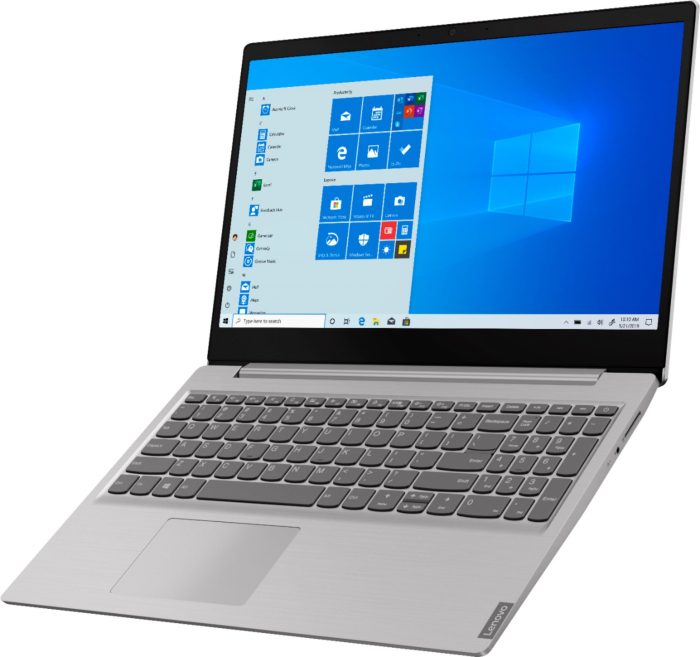
Processor: 10th Gen Intel Core i3-1005G1 or i5-1035G1 or i7-1065G7 or AMD Ryzen 3 3250U or Ryzen 5 3500U
Display: 14″ or 15.6″ FHD or HD TN or HD SVA or 15.6″ FHD IPS or 15.6″ FHD IPS touchscreen
Memory: 4GB or 8GB or 12GB DDR4 RAM (upgradable up to 20GB)
Storage: 128GB or 256GB or 512GB PCIe NVMe SSD or 1TB HDD
Graphics: Intel UHD Graphics or NVIDIA GeForce MX330 or MX350 or AMD Radeon Graphics
Weight: 3.3lbs (14″) or 4.07lbs (15.6″)
The Lenovo Ideapad 3 is an entry-level laptop that is suitable for basic tasks like web browsing, document editing, and video streaming. However, it may not provide the best gaming experience due to its limited hardware. It features an AMD Ryzen 3 3250U processor, 8GB of DDR4 RAM, and a 256GB PCIe SSD. These specifications are enough for basic tasks and light multitasking, but not suitable for demanding applications or games.
In terms of design, the Lenovo Ideapad 3 has a simple and sleek appearance, with a platinum grey finish. It is lightweight, weighing just over 3 pounds, making it easy to carry around. The 14-inch Full HD display has a resolution of 1920 x 1080 pixels, which provides decent picture quality and clarity.
As for connectivity, the Lenovo Ideapad 3 has a decent range of ports, including two USB-A 3.1 Gen 1 ports, one USB-A 2.0 port, an HDMI port, an Ethernet port, and a headphone/microphone jack. It also features Wi-Fi 5 and Bluetooth 4.2 connectivity.
The Lenovo Ideapad 3 features a 2-cell lithium-ion battery that can provide up to 7.5 hours of battery life, depending on usage. This battery life is suitable for light usage, such as web browsing or document editing. However, for demanding tasks or video streaming, the battery life may be reduced.
What we liked:
- Affordable price point, making it a good option for budget-conscious users.
- Decent performance with AMD Ryzen 5 processor and Radeon graphics card.
- Lightweight and slim design
- Good battery life, lasting around 6-7 hours.
- Good connectivity options with multiple USB ports, an HDMI port
What we didn’t like:
- The display is not very bright or vivid compared to some other laptops.
- The build quality is not as durable as some other laptops.
2. Dell Latitude 3510
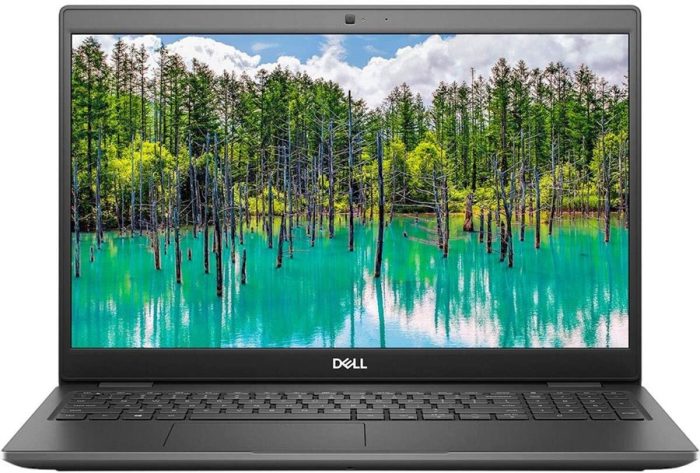
· CPU: 1.6GHz Intel Core i5-10210U
· RAM: 32GB
· Storage: 1TB SSD
· Display: 15.6-inch FHD IPS (1366×768)
· GPU: Integrated Intel UHD Graphics
· Battery: Up to 8 hours
We recommend the Dell Latitude 3510 to physiotherapy students. Your best option is the Latitude 3510, an ultraportable beast with top-notch specifications, a lengthy battery life, and delectable ergonomics.
Starting with its design This 15.6-inch laptop offers a clear FHD 1080p display and a super-sleek polycarbonate frame. Viewing PDFs, PPTs, and nursing animations on this laptop is rather thrilling because of the panel’s anti-glare backlit screen, which has a brightness of 250 nits.
A 2.4GHz Intel Core processor, 32GB of Memory, a 1TB SSD, WiFi 6, Bluetooth 5.1, and Windows 10 are included on the inside. When taken as a whole, these features allow users to use the laptop without experiencing any latency and to save all of their lectures and presentations without worrying about running out of space.
No less lagging is the keyboard on the Latitude 3510. The spacing between the keys allows you to write steadily and more quickly when taking notes. The touchpad is also very snappy and has multi-gesture capabilities, offering you a tonne of shortcuts to increase your productivity when working on a complex task.
The Latitude 3510’s 8-hour battery life, which means you won’t have to worry about running out of power during the day, is what we most like about it. We were disappointed by the lack of USB 3.0 connections, however. If you require it, you won’t be able to attach external hard drives to the laptop.
Yet, with its quick processor, comfortable keyboard, and clear display, the Dell Latitude 3510 is one of the finest laptops for university. The positives in this instance much outweigh the drawbacks.
What we liked
- Include a fast Core i7 CPU
- A great display
- Quick performance
- 8-hour battery life.
What we didn’t like
- No USB 3.0 ports
- Expensive
3. LG Gram 17

· CPU: 1.3GHz Intel Core i7-1065G7
· RAM: 16GB
· Storage: 512GB SSD
· Display: 17-inch WQXGA (2560×1600)
· GPU: integrated Intel Iris Plus
· Battery: Up to 15 hours
You need a portable laptop whether you are attending courses or doing rounds at a hospital. I like LG’s commitment to portability, and the Gram 17 is the ideal illustration.
Not only is the construction strong, but the battery life is 15+ hours. Also, it includes several practical advantages and accessibility features. This laptop can last you two whole days if all you’re doing is studying or taking notes.
But, watching animations and 3D body models may condense this to a single day. I also enjoy how rapidly it charges since you can maximize your limited socket time. One of the aspects of the Gram 17 that I like most is the display. It makes it simple to keep up with lectures and compare notes.
Also, a laptop with 16 GB of Memory may run many apps simultaneously without lagging. This is also a result of the efficiency of Intel’s 10th-generation CPU while switching between workloads.
Transferring files is a common part of the university. The ports on the side make it possible to transfer anything to the Gram 17—be it notes or textbook copies. It works with HDMI, microSD, USB-A, and USB-C. If you wish to keep your notes, theses, and documents confidential, there is even a fingerprint reader.
The distance between the keys on the Gram 17 is one aspect I didn’t enjoy. It only takes a little time to get accustomed to the keyboard, which is by no means a negative thing.
The integrated GPU of this smartphone is yet another drawback. I’d recommend the Apple MacBook Air M1 or the MSI Modern 14 if you like playing games or want to run high-quality animations. A stylish laptop with a battery life of more than 15 hours is the LG Gram 17. For heavy multitasking, it also has a backlit keyboard and 16GB of Memory.
Nonetheless, its lightweight design, which allows you to bring it to lessons and your weekly rounds, is my favorite aspect of it.
Hence, choosing the LG Gram is advised if you’re seeking an ultraportable, light, and high-powered laptop.
What we liked
Pros include its ability to multitask well, its lightweight, nanocarbon magnesium construction, its 15-hour battery life, and its backlit keyboard.
What we didn’t like
Cons include its average speakers, which face downward, and its odd key spacing.
Trackpad 6 has difficulty with palm rejection.
4. ASUS VivoBook 15
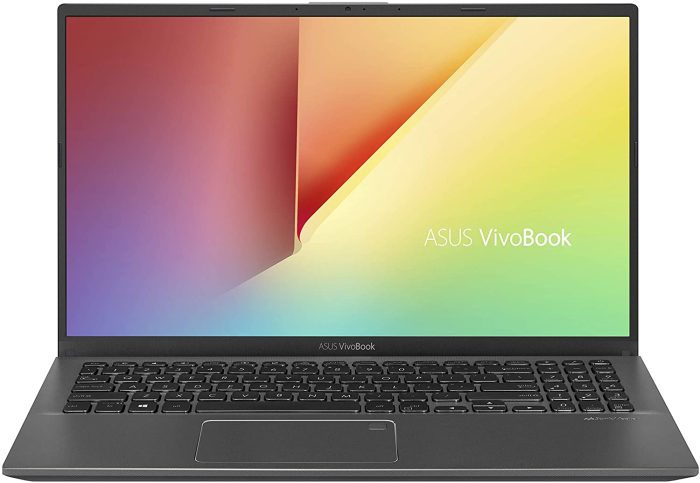
· CPU: 2.3GHz AMD Ryzen 7 3700U
· RAM: 8GB
· Storage: 512GB SSD
· Display: 15.6-inch FHD (1920 x 1080)
· GPU: Integrated AMD Radeon Vega 10
· Battery: Up to 15 hours
Considering purchasing a high-end reconditioned laptop? What if you could get a new laptop that had the same high-end feel? Crazy, we agree. But, the ASUS VivoBook 15 is a superior product with a lightweight design that is still quite reasonable.
The AMD Ryzen 7 gives you a quick and simple browsing experience, which is essential for the majority of physiotherapy students when paired with 8GB RAM and 512GB SSD.
The laptop weighs under 3.5 lbs while having a 15.6-inch display. This makes it possible for the students to study anywhere they wish, at a library or a café.
The keyboard on the VivoBook 15 is 3.5 degrees slanted. As a result, you may comfortably type for a long period while taking notes. Unfortunately, the battery life is just 6 hours long owing to its high-geared construction.
In all, the VivoBook 15 is a fantastic choice to take into account if you’re searching for a laptop with a thin design, effective performance, and a low price.
What we liked
- An affordable choice
- Lightweight and slim design
- Backlit and slanted keyboard
- Smooth and effective operation
What we didn’t like
The battery life is just 6 hours, and the camera is of poor quality.
5. Apple MacBook Air M2
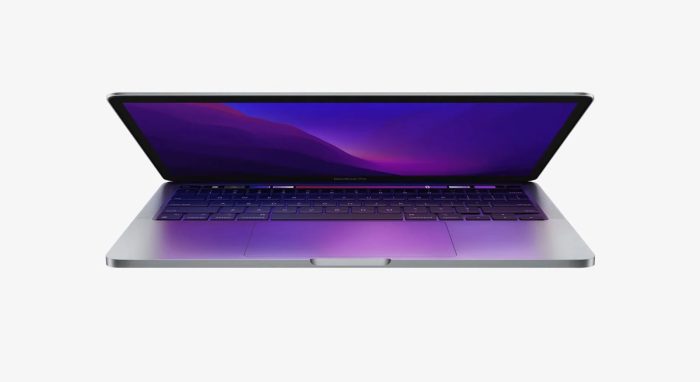
· CPU: 8-Core Apple M2 Chip
· RAM: 8GB
· Storage: 256GB SSD
· Display: 13.6-inch Liquid Retina (2560 x 1664)
· GPU: Integrated Apple 8-core
· Battery: Up to 18 hours
Everyone anticipated this, didn’t they? There’s no getting around the reality that the MacBook has long been popular among students because of its 2.7 pounds weight and opulent look.
At the heart of the Air’s quick performance is the amazing Apple M2 processor. The M2 integrates better with the native Apple environment, much like its M1 predecessors. It will enable you to use any EMR program with fluid performance and is very quick.
The standard model has 8GB of RAM, although due to the extensive macOS optimization, this doesn’t signify much. Because of the M2 processor, Apple’s 8GB RAM is plenty even for the majority of image processing and charting.
Storage is different since you get a 256GB SSD, which is likely plenty. But, you may go as high as 2TB. While expensive, the choice is available. Also, Apple offers an iCloud membership ($0.99 to $9.99 from 50GB to 2TB), which you may use to save your assignments and lectures. You can also use an external hard drive.
With a battery life of well over 17 hours, you can work for extended periods without being tethered to a plug. The M2 processor deserves praise for optimizing the battery so much better than the majority of competitors running Windows.
When examining an actual picture under a microscope, the 13.6-inch Liquid Retina True-Tone display is sufficient to multitask and split displays with accuracy and clarity.
While having fantastic features, it could not work with some programs that you need to install for your university, such “Medcalc.” Yet the MacBook M2 is a good laptop to have if that’s not a key priority.
NOTE: Macbooks and macOS aren’t for everyone. If you have never used a Macbook before, you may find it difficult to adapt to the new operating system.
What we liked
- Stunning Liquid Retina display
- Powerful processor
- Ultra-thin
- Exceptional 17-hour battery life
- 1080p webcam
What we didn’t like
- May not be affordable for everyone
- Incompatible with certain apps.
6. HP – Spectre x360 2-in-1 (best hp laptop for physiotherapy students)
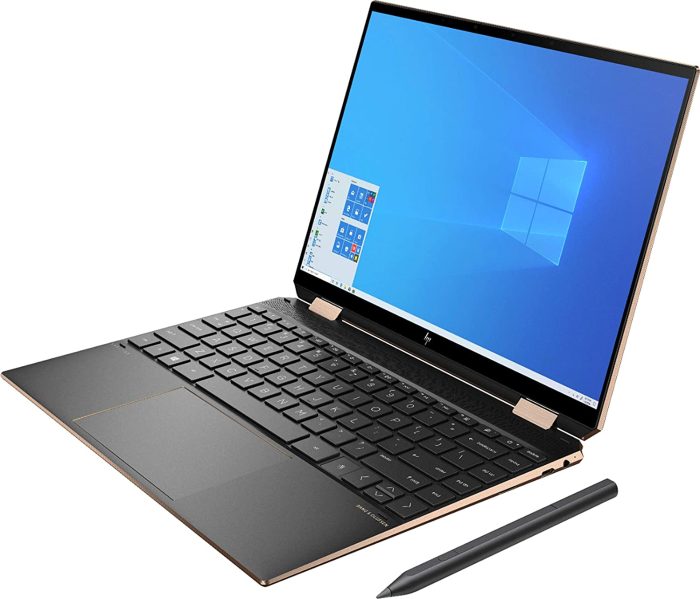
13.3-inch 1080p or 4K touchscreen
Quad-core Intel Core i5 or i7 processor
8GB or 16GB of RAM
256GB or 512GB SSD
Optional gigabit LTE
Included pen
“Dark ash silver” or “Poseidon blue”
2.9 pounds, 14.5mm thick
HP – Spectre x360 is another beautiful 2 in1 laptop in our list of best laptops for physiotherapy students. The laptop is a good example of how little HP disappoints when it comes to laptops. After examining it, we think it would fit your criteria for what you need for university.
The laptop already has Windows 10 Home 64 preloaded, which offers a lot of interesting features. Also, it has a sizable 15.6-inch display. Yet it is only the fundamental aspect. Moreover, the screen incorporates a 4K micro-edge LED.
To make touching simpler, it also contains a touchscreen function and an HP Active stylus. In addition, the laptop features an HP sleeve.
What about its effectiveness? For better performance, this laptop has an Intel Core i7 CPU from the 8th generation. Furthermore, keep in mind that it includes 2GB of dedicated Nvidia GeForce MX150 graphics.
Moreover, the laptop has 8GB of Memory. In this manner, even when you wish to launch many programs, you won’t need to worry much. Also, it offers a remarkable 512GB SSD storage capacity.
This laptop will also be useful if you want to take online programs. How so? It has a wide-angle FHD Infrared camera in addition to a built-in digital microphone.
What we liked
- Has speakers that are suitable for high-quality sound.
- An expansive camera
- Has a long battery life and supports multi-touch gestures Negatives
What we didn’t like
- It is more expensive to purchase compared to others in the same category because of the aluminum body.
7. ASUS ZenBook 14
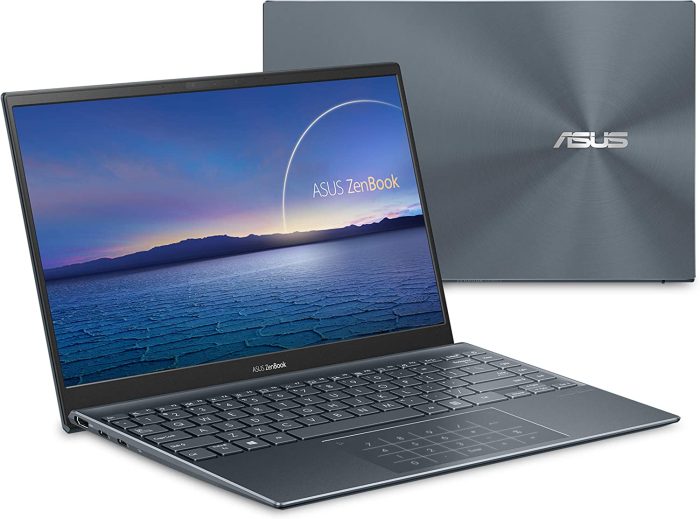
· CPU: 2.8GHz Intel Core i7-1165G7
· RAM: 16GB
· Storage: 512GB SSD
· Display: 14-inch FHD (1920 x 1080)
· GPU: 2GB NVIDIA GeForce MX450
· Battery: Up to 16 hours
ASUS ZenBook 14 is another unique laptop in our list of best laptops for physiotherapy students. Due to its ScreenPad 2.0, the ASUS ZenBook 14 stands apart from other models in its class. It has two displays in one laptop. With the ability to seamlessly transform into another operating system, this touchpad/touchscreen makes multitasking easier than ever.
The longest battery time on this list is 16.5 hours. Because of this, using the laptop for extended periods without worrying about running out of power is ideal. In reality, if you use it for 6-7 hours every day, the battery may not run out until the third workday on a full charge.
Moreover, the ergonomic key travel and well-spaced keys make it simple to type on. Similarly, the touchscreen feature’s great sensitivity allows you to use even the slightest touch to manage the system.
The laptop’s inside is equipped with an Intel Core i7 and 16GB of RAM, which eliminates any lagging possibilities. Also, the 512GB SSD has more space than previously to download files and applications!
The laptop’s lack of dedicated graphics was the only minor drawback we discovered. As a result, intensive uses like video editing and gaming are not appropriate.
All things considered, the ASUS ZenBook 14 offers excellent value for the money thanks to its impressive battery life and responsive ScreenPad.
What we liked
- Unbelievable 16-hour battery life
- Excellent sound quality
- Very sensitive touchscreen
- Simple ScreenPad 2.0 multitasking
- Sleek Design
What we didn’t like
- Fans can get noisy when you’re running lots of apps
8. Microsoft Surface Pro 7 best 2 in 1 laptops for physiotherapy students
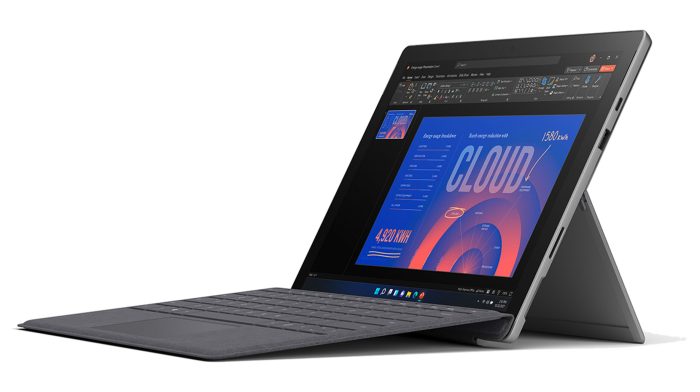
12.3”
RAM: 8GB
256GB SSD
Processor: 10th Generation Intel Core i5
Weight: 1.7lbs/0.77kg
Operating system: Windows 10 Home
Graphics: Intel Iris Plus Graphics
If you are growing bored of carrying a large laptop, the new Microsoft Surface Pro 7 is the perfect option. The Microsoft Surface Pro 7 can attain an exceptionally lightweight, weighing in at only 1.7 pounds, thanks to its 12.3-inch screen and elegant design. This implies that you won’t even notice that you’re holding a laptop.
Even though it has a 12.3-inch screen, it has an HD resolution of 2736 x 1824 rather than the usual 1920 x 1080 pixels. You can anticipate sharp, clear pictures without overly saturated colors while you are viewing a YouTube video or just researching online.
This laptop/8 tablet’s GB RAM, 256 GB SSD, and 10th Gen Intel Core i5 CPU are more than adequate for physiotherapy students to do in-depth research while running many windows and programs at once.
A dedicated graphics card is not included with the Microsoft Surface Pro 7, thus you can’t truly play any visually demanding games at high settings. The Microsoft Surface Pro 7 is designed to be taken about, so a lengthy battery life of roughly 10 hours means you won’t need to carry a charger with you.
What we liked
- A front-facing camera of high quality
- Excellent color range
- 11.5 hours of battery life
What we didn’t like
- The keyboard and Surface Pen still cost an extra
9. Lenovo ThinkPad E15
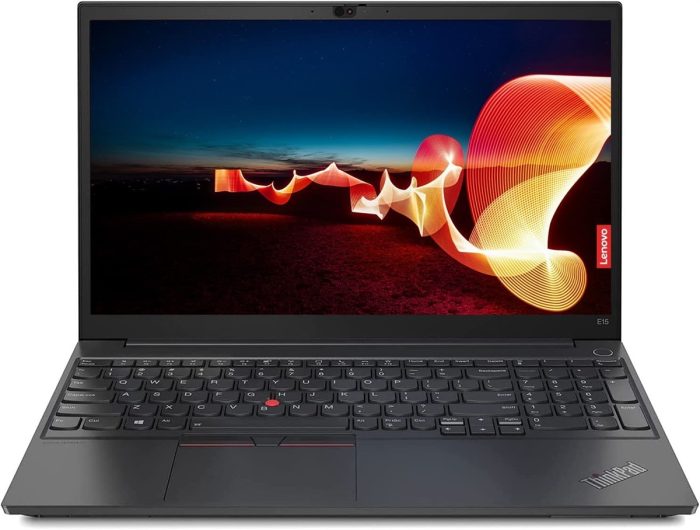
· CPU: 2.4GHz Intel Core i5-1135G7
· RAM: 16GB
· Storage: 512GB SSD
· Display: 15.6-inch FHD (1920 x 1080)
· GPU: Integrated Intel Iris Xe
· Battery: Up to 10 hours
The Lenovo ThinkPad E15 is a Ninja: it is quicker than light, silent than silence, and lightest than air—all qualities a nursing student needs.
Why we loved this laptop is as follows:
High-quality graphics and pictures provide an unrivaled and compelling experience on the 15.6-inch display’s 1920 x 1080 pixel resolution. Both the text and the images are clear and sharp.
With an 11th Gen Intel Core i5 CPU, 16GB RAM, 512GB SSD storage, and Windows 11 operating system, this laptop is herculean apart from its aesthetic characteristics. Anything is possible—multitasking, gaming, taking notes, you name it.
A better typing experience is made possible with the illuminated keyboard, and the twin stereo speakers provide better sound quality overall.
Although the battery time of 10 hours is nothing exceptional, it will last for most of the day, allowing you to do less power-intensive tasks like reading notes or reviewing data sheets without any problems.
The Lenovo ThinkPad E15 is an all-around beauty that should be tried out for its mobility, excellent resolution, and backlit keyboard.
What we liked
- Clear and sharp display
- Better sound quality
- Ultra-portable
- Easier to type
What we didn’t like
- It’s a bit bulky
10. Acer Aspire 5
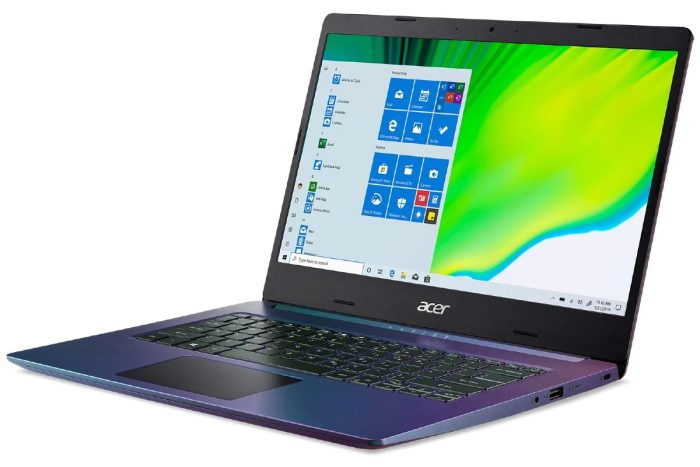
· CPU: 1GHz Intel Core i5-1035G1
· RAM: 8GB
· Storage: 256GB SSD
· Display: 15.6-inch FHD IPS (1920 x 1080)
· GPU: Integrated Intel UHD
· Battery Life: Up to 8 hours
With its 15.6-inch FHD IPS display, 8-hour battery, and 256GB storage, the Acer Aspire 5 proves that a less expensive laptop may nevertheless do wonders for you.
While its metal cover enhances its look, it weighs just 3.7 lbs because of its thin design, making it portable art for you to flex.
The internal components of the Acer Aspire 5 include a 10th Gen Intel Core i5, 8GB RAM, and Windows 10 Home. They make sure the CPU delivers outstanding performance with no delays.
In comparison to the rest of the chassis, the backlit keyboard is incredibly strong and also relatively pleasant to use. The touchpad, on the other hand, has a mushy feel to it and is quite bendable. A wireless external mouse may be able to remedy this.
The Acer Aspire 5 performs well for a laptop in this price range thanks to its pleasant keyboard, captivating display, and quick CPU.
What we liked
- Small and sleek design
- Affordable pricing
- Upgraded Intel Core i5 CPU
- Crisp, brilliant FHD IPS display
What we didn’t like
- The touchpad lacks an integrated fingerprint reader and feels mushy when pressed.
Frequently Asked Questions on Best Laptops for Physiotherapy students (FAQs)
Let’s take a look at some of the often-asked questions that buyers of the best laptops for physiotherapy students frequently have.
What should I look for in a laptop as a physiotherapy student?
As a physiotherapy student, you should look for a laptop with a fast processor, a comfortable keyboard, and a long battery life. Additionally, a high-quality display and good graphics performance can be useful if you need to work with visual aids or analyze medical images.
How much storage do I need as a physiotherapy student?
The amount of storage you need as a physiotherapy student depends on your specific needs. If you need to store large medical images or videos, you may want to consider a laptop with at least 512GB of storage. However, if you plan to store most of your files in the cloud, you may be able to get by with less storage.
Do I need a dedicated graphics card for my laptop?
A dedicated graphics card is not necessary for most physiotherapy-related tasks. However, if you plan to work with 3D modeling software or analyze complex medical images, a dedicated graphics card can be useful.
Are touchscreens necessary for physiotherapy students?
Touchscreens are not necessary for physiotherapy students, but they can be useful for certain tasks, such as taking notes or drawing diagrams. If you think you would benefit from a touchscreen, look for a laptop that has this feature. However, keep in mind that touchscreens tend to add to the overall cost of a laptop.
Can I use a lightweight laptop as a physiotherapy student?
Yes, a lightweight laptop can be a good option for physiotherapy students, as it allows you to easily transport your laptop to and from class or clinical rotations. Just make sure to choose a laptop with good battery life if you plan to use it for long periods without access to an outlet.
Final Thoughts on Best Laptops for Physiotherapy Students
While each Physiotherapy student may have distinct laptop needs, mobility, effectiveness, and affordability are qualities that all want. We think the Dell Latitude 3510 and HP Specter X360 are the best laptops for nursing students. Acer Aspire 5 isn’t far behind if you don’t want to pay that much.
Furthermore, the Macbook Air is also an excellent choice. But as stated earlier Macbooks are not for everyone. If you come from a Windows background, you may find it difficult to use or enjoy a Macbook.
It all comes down to your use and budget in the end. Even better, you may enter your needs in our laptop finder, and we’ll provide the finest recommendations.
Need more specialized guidance when stuck between laptops? Please feel free to contact us

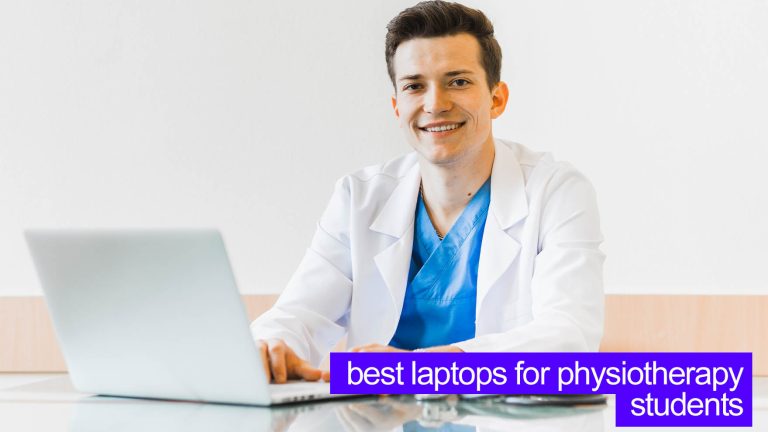
![Is MacBook or a Windows Laptop Better for Programming? [Expert Opinion]](https://mobizilla.pk/wp-content/uploads/2023/10/40-600x396.jpg)
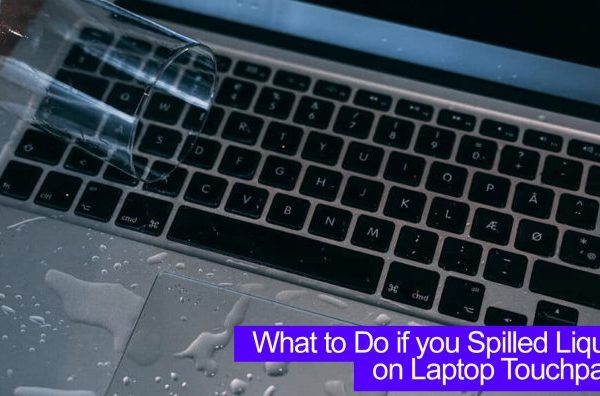
![What is Small Red Button in Middle Laptop Keyboard for? [TrackPoint Explained]](https://mobizilla.pk/wp-content/uploads/2023/10/24-1-600x396.jpg)
![Can a Regular Laptop Be Used For Gaming? [Expert Opinions]](https://mobizilla.pk/wp-content/uploads/2023/10/the-hp-omen-16-geforce-rtx-4070-gaming-laptop-is-1305-after_wumb-600x394.jpg)